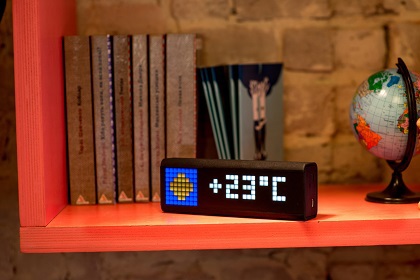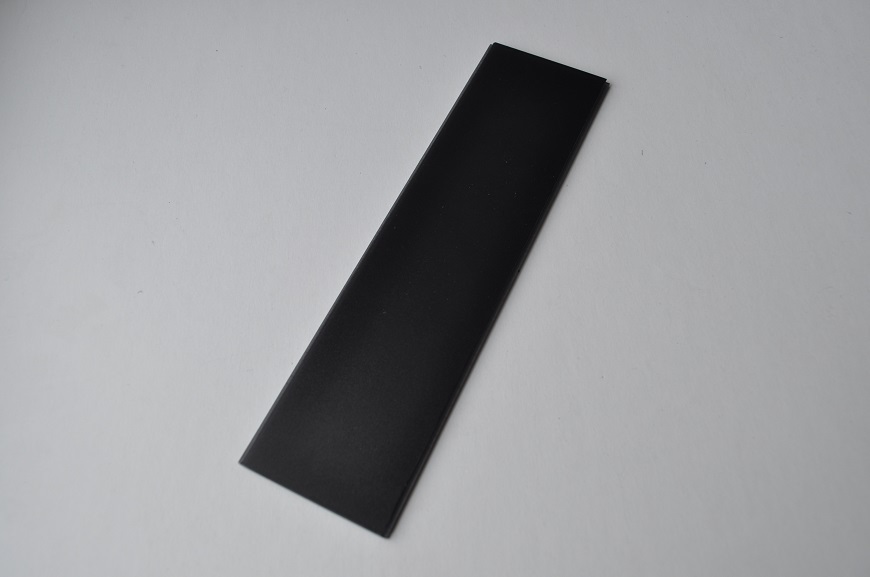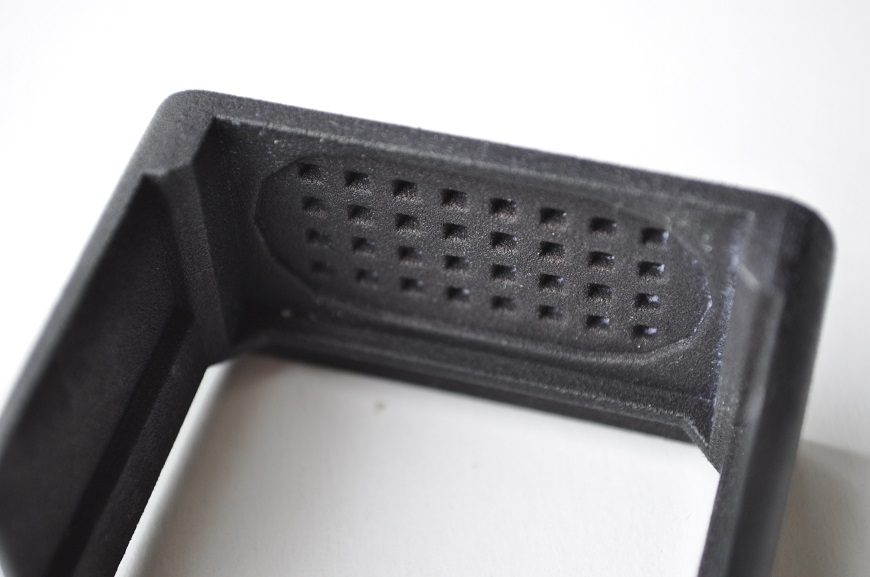The choice of 3D printing technology for the production of a small number of buildings

This story should help developers of “hardware” products, save their time when choosing 3D printing technologies and save from mistakes.
This publication is a continuation of an article about the production process of the pilot batch of LaMetric , namely, how the instrument case was created. The following experience is based on several iterations of production, during which we tried and combined various technologies.
Problem
The task was to manufacture several instrument cases.
')
The housing consists of 4 parts:
- “Shell” - the detail is a casing resembling the shape of a
“shell”“profile” (external part of the device); - “Mounting frame” - a frame on which all internal elements are mounted (electronics, connectors, etc.);
- “Reflector“ - by construction it resembles “cells” with square cells (part of the screen construction);
- “Screen” - the front part of the screen is made of transparent material;
As a rule, a pilot batch of buildings should solve two problems:
- check the UX / UI of the device (appearance of the device, tactile sensations, correct sizes and proportions, user reaction, etc.);
- perform full functional testing (latches, fasteners, clamps for internal electronics and various parts of the case, re-checking the dimensions for the slots for connectors and the joining point of all parts, etc.);
Today, with the abundance and availability of various 3D printing technologies, it is difficult to quickly select the necessary that would solve these problems.
FDM Technology (Fused Deposition Modeling)
Initially, we chose the technology of layer-by-layer growing of objects with FDM polymer filament. Due to the extensive popularity and availability of the main rates were placed on her. A small service was found that agreed to take up work and print out the details.
The result did not meet expectations.

Detail of the "Shell" . 3D printing, FDM method
Compared to the others, the “Shell” part turned out to be more successful, despite some shortcomings. One end came out slightly "melted" and visually a little rough.

Detail of the “Mounting frame” . 3D printing, FDM method
Before printing, the part of the “Mounting frame” had to be thoroughly modified, since some constructive moments could not be printed at all (square holes, sides 1 mm thick, which retreated from the bearing wall, etc.) In addition, the basic dimensions of the structure differed from the model 1-3mm. Therefore, for the correct and accurate installation of all the internals, we had to modify a lot with a file.

Detail "Reflector" . 3D printing, FDM method (left), laser cutting (right)
The “Reflector” design required increased accuracy, ideal angles of the squares and evenness of the walls. As a result, the corners came out rounded, and one side turned out to be “melted” and uneven. The item was not suitable for further testing. We decided to redo it using laser cutting technology ( acrylic material). The accuracy of the parts is much better.
With the help of this technology also made part "Screen" .

Detail "Screen" . Laser cutting, smoky acrylic
The manufacturing process with all the corrections took approximately 10 days, plus
two days for the completion of parts files. Printing three parts cost $ 85,
laser cutting cost $ 8 ( “Reflector” + “Screen” ).

Assembled prototype (FDM technology + laser cutting)
Findings:
- Due to the limitations of the FDM technology, the prototype could not be called complete, it was impossible to carry out functional tests on it, and the appearance remained rough. In the end, we faced all the problems associated with FDM technology (well described in the article ). In turn, laser cutting proved to be on the good side and went up to 100% for this type of part.
- FDM technology is perfect for tasks such as choosing a device size, a suitable shape, or for manufacturing parts that are not critical and hidden from the user's eyes. This technology is not suitable for checking the so-called “look and feel” of the device, and it will also be difficult to use when the part is fragile, or boards will be mounted into it.
SLS (Selective Laser Sintering) Technology
As a result, our research focused on 3D printing technology using the selective laser sintering of SLS powder materials. Used the well-known service Shapeways , the material for printing was chosen “Strong & Flexible Plastic” .
Since the technology has more accurate tolerances and printing characteristics, all the details were sent without design changes and modifications, all in the original version.

Detail of the "Shell" . 3D printing, SLS method
The shell came out with perfectly rounded edges. On the top of the same laser as for cutting acrylic pointers for the touch buttons were engraved.

Detail of the “Mounting frame” . 3D printing, SLS method
The detail of the “Mounting frame” came out much more accurately than the FDM technology. All design points were printed with an accuracy of 0.2 mm.
Although for the “Reflector” part there was a selected acrylic laser cutting technology, we sent it to 3D printing as well for interest. The result was excellent.

Detail "Reflector" . 3D printing, SLS method
Three parts were ready in 10 days. The cost of products with delivery cost € 132.
Findings:
- The Shapeways service turned out to be very convenient and loyal. On the site, you can choose different versions of materials in different colors. The order process is very fast.
- The technology of 3D printing SLS method met all our expectations. Details were printed with an accuracy of 0.1-0.2 mm, which allowed for more thorough functional testing without additional modifications. All internal boards and connectors are clearly fixed in the case.
- The surface of the hull acquired a high-quality presentation, was perceived by users as an end product, and they enthusiastically commented and tested the pilot batch.
- A big plus is that the material is amenable to laser engraving (the use of laser engraving can be seen in the photo above).
- This technology is almost twice as expensive as FDM technology, but it is of excellent quality.

Assembled prototype on tests (SLS technology + laser cutting)
Conclusion
Based on our own experience, we believe that SLS technology is ideally suited for the purposes of pilot lots. Nevertheless, try to use various technologies to the maximum, do not stop at one and do not be afraid to combine. Browse through various 3D printing technologies and find out which one is right for your needs.
For the manufacture of several buildings choose the service you like, the number of which is growing daily. When using SLS technology, we recommend Shapeways for both quality, price, execution time, and a large portfolio of materials that will help create a variety of products.
Source: https://habr.com/ru/post/217093/
All Articles